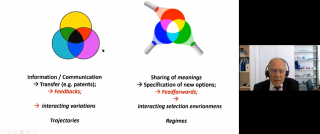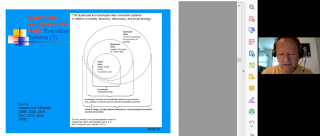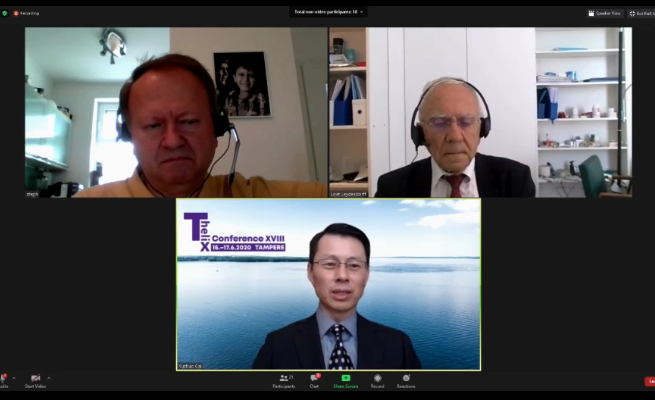“While the Triple, Quadruple and Quintuple Helix Models of innovation are popular among researchers and policy-makers, there are few dialogues among them” said Dr. Yuzhuo Cai, Chair of Triple Helix Conference 2020, Senior Lecturer and Adjunct Professor in Tampere University.
The needs for dialogues and synergy of these fundamental models have been longing by researchers, and for the first time in history, the Triple Helix Conference 2020 invited the founders of the these fundamental theoretical models to present their cutting-edge research findings and their theoretical thinkings behind that. The Plenary Section on “Triple Helix vs. Quadruple and Quintuple Helix Dialogue” was chaired opened by Dr. Cai.
After opening the section, Prof. Dr. Loet Leydesdorff (Amsterdam University, the Netherlands) one of the co-founder of Triple Helix Model of innovation system, gave us a presentation on “Triple and Next-order Helices”, which explained not only the interrelation among helices in Triple Helix, but also the connection between Triple Helix model and Quadruple Helix model. His talk suggested that the Triple Helix can be extended to quadruple or higher order helix-models, and any high-order helix systems can be decomposable into triads.

Panelist Prof. Leydesdorff presented traditional and future-oriented ways of considering interaction among helices
After that, Prof. Dr. Elias Carayannis (George Washington University, the U.S.), and Prof. Dr. David Friedrich James Campbell (Danube University Krems, Austria), the founders of Quadruple Helix Model and Quintuple Helix Model of innovation system, gave a presentation on “The ecosystem as helix: Towards industry and society 5.0 via the Quadruple/Quintuple Innovation Helix Lenses”.
Prof. Carayannis first demonstrated the evolution of the idea of Quadruple Helix Model in his and his colleagues’ works and also elaborated on the significance of the fourth and the fifth helix strand and how they differentiate substantially and organically from the Triple Helix. In addition, Prof. Carayannis outline the bridging and enabling role of the Quadruple and Quintuple Helix Models to empower Developed Democracies to attain Industry and Society 5.0 status (an AI-enabled, balanced human and machine configuration of institutions, policies and practices).
Then Prof. Campbell continued to comment on the Quadruple and Quintuple Helix Model, and different frameworks to understand the relation among the helices. In their presentation, Prof. Carayannis and Prof. Campbell highlighted one of the significant contribution of their works is to add the Mode 3 Knowledge Production System to emphasize the higher-order learning aspect in knowledge production (see Carayannis, 2000 – https://www.routledge.com/Strategic-Management-of-Technological-Learning/author/p/book/9781420037364).

Panelists Prof. Carayannis and Prof. Campbell presented the Quadruple and Quintuple Helix Models in related to society, ecology, democracy and social ecology
After the presentations, panelists continued to discuss on the inter-relations among helices, and how they can inter-support to serve our society. Floor was also opened to audience. Several interesting questions, such as “can community be considered as a helice?”, “what’s the relation between the helices and their situated environment?”, “how to understand diversity, ecology, democracy in the innovation systems?”. Many questions may not find a simple answer, but speakers’ responses and insights inspired us to think beyond and deeper.
Are you interested in watching the whole session? Watch it, refresh your memory of the insightful dialogue in our conference platform HERE.
Text and photo: Dr. Gaoming Zheng, Dr. Yuzhuo Cai

